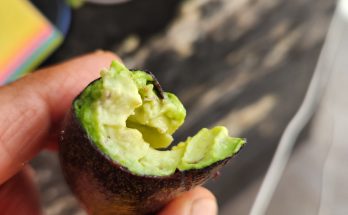By Joaquin Sierra Rangel
In the early hours of the Saturday closest to September 29—to begin the annual Archangel St. Michael festival—the tradition of La Alborada (the dawn) has been carried out in San Miguel de Allende for almost 100 years. The tradition began in Hércules, Queretaro, in approximately 1880. It later went on to Salvatierra, Guanajuato, and then to San Miguel, brought here by workers from Salvatierra’s La Reforma factory when that factory burned and some of its workers moved to Fabrica La Aurora, bringing their traditions with them. One such tradition was the veneration of the Virgen Purisima (the Purest Virgin).
San Miguel’s La Alborada was first held on December 8, 1924, at Las Monjas (the Church of the Immaculate Conception), where the nuns created 50 paper stars as decorations representing Saint Lucia’s eyes, along with comets, the sun, the moon, and stars from Las Siete Cabrillas (a star group also known as the Seven Sisters). It is said that there were other stars that eventually disappeared over time, such as Three Ave Marías and the star of the three Magi.
In 1925, at the request of Priest Refugio Solis and the city council, the Alborada was changed to honor San Miguel’s patron saint, the Archangel Saint Michael, and moved to the Parroquia, but due to the Cristero Wars, celebrations didn’t begin again until 1929.
Joined by workers from other factories in the area—mostly from Hércules, Salvatierra, and Soria (in Guanajuato)—workers from the La Aurora textile factory awaited the Alborada with great joy and organized festivities with musical groups, wind bands, and popular dances. All this occurred the night before the Alborada, for which preparations began very early in the morning as workers waited for the parade to El Jardin to begin at 3:30 a.m., signaled by a cannon blast that announced the official start of the Alborada. Some of those responsible for the cannon in the past were Don Efrén Ayala, Antonio Reyes, and Roque and Joaquín Reyes, among others. The workers used the cannon repeatedly, not only for the Alborada, but also at soccer games and other events. Those in the parade were helped by lighting placed along the road Calzada Aurora because it was quite dark. People called it El Alumbramiento (the illumination), with neighbors placing lanterns with candles to light the route for the passing workers.
Joining the workers were railroad workers—some from the towns of Empalme Escobedo and Soria and among them were Don Román and Luis Carrillo, Don Domingo Rivera Coronillas, Jesús Campos, Antonio Vázquez, Francisco Arias, and Ladislao Arias. They were responsible for providing gunpowder, a portion of which was funded through donations from the railroad workers and another part through a portion of each factory worker’s salary. The railroad workers distinguished themselves by their flare lights, and Don Domingo was responsible for detonating the fireworks. Once they arrived at the Parroquia at 4am, the burning of rockets, lights, and fireworks began.
Gunpowder and the classic castle of Don Leopoldo Estrada Hernández were provided by the Valle del Maiz with a group of masons. Another guild that also provided gunpowder was the Tablajeros y Comerciantes.
There are several anecdotes about the history of the Alborada. At one time, the conchero dancers participated in the festivities. People were paid 25 cents to carry a star and one peso to carry a mojiganga. The factory cannon that was used to mark the beginning of every year’s Alborada stopped being used after an incident when a woman crossing in front of it was hit.
The Villa Mercadillo family says that the sculpture of San Miguel de la Morisma had also been used during the Alborada and that the first stars were made of brass. Jesús Morales mentions the dance that once accompanied the season was withdrawn in the middle of the last century for the safety of the dancers. The tradition of the Alborada is a mixture of Alboradas from each region in Salvatierra, Hércules, Villa Hidalgo, etc. In Hércules, the tradition is still preserved, but there it is called El Gallo (the rooster).
The Chintas recount that when they brought the stars to the neighborhood, they drew lots to determine who would create which stars. They also say that on two occasions they drew the Siete Cabrillas stars, and to create them, they had to do it outside the house because they did not fit inside. Aniceto Morales says that they stored all the gunpowder for the rockets in the parish, but one time it exploded, causing great damage to the structure next to the parish. Don Aniceto was also one of the people who brought the music of Salvatierra in one of the commissions sent by its factory.
Most Sanmiguelenses know about the flood that occurred in 1998, which happened to occur during the night of La Alborada. This prevented the start of the celebration because the flooding had washed away the bridge, and it was impossible to cross. Somehow, a star or two were placed in the Jardin, but that was all that year. The cannon that was used when the pope arrived in Mexico sounded in San Miguel as well. We invite you to live these deeply rooted traditions in San Miguel de Allende as we celebrate La Alborada this year.




